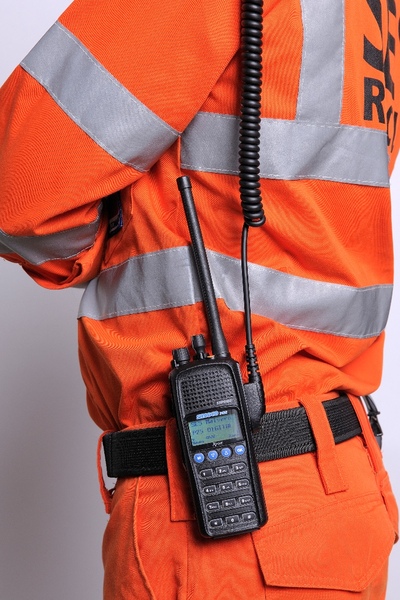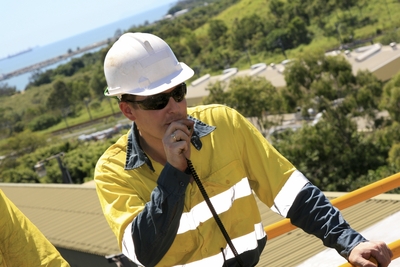Critical comms: TETRA vs DMR
By Jonathan Bunce, Group Marketing Director, Simoco
Thursday, 29 August, 2013
Critical comms users are looking beyond push-to-talk voice to an all-IP world of converged applications. But which radio standard is best? Jonathan Bunce of Simoco explains the European perspective and puts the case for DMR as a successor to TETRA.
In the world of critical and emergency services communications in Europe, the Middle East and Asia, TETRA has been the gold standard for over 15 years. Prior to its development we had a world of fragmented, stand-alone PMR systems that were wholly inadequate to face up to the challenges of crime and public safety, which require national coordination and no-compromise performance.
The UK Airwave system has been a flagship success story for the ETSI standard. Similar TETRA systems such as BOSnet in Germany are equally battle proven and highly valued. Indeed, TETRA has been widely adopted in various forms and, along with the P25 standard, has been successful with public safety organisations across the world.
TETRA: a tough act to follow
When we look at what TETRA offers it’s not hard to see why its advent was such a step change in critical communications standards. First of all, it offers critical communications functionality that we now take for granted; like instant push-to-talk (PTT) voice and group communication. Based on four-slot TDMA, it offers good range at relatively low power.
Its existing implementations in dedicated public safety and high-end commercial applications also offer the sort of resilience, redundancy and dedicated high-density traffic capacity that government organisations need to cope with major emergency situations like the bombings in London in 2005, where the limitations of a publicly accessible cellular system were tragically revealed.
A vast array of functionality has also been built into TETRA equipment over the years, tailored to the early customer base of government networks.
So, TETRA has a lot going for it and any decision to move to another standard needs to be carefully evaluated. However, as an organisation that provides TETRA, P25, MPT1327 trunked analog systems and DMR networks, Simoco is seeing an increase in the number of tenders for large critical communications networks that do not specify TETRA as the only option and are increasingly making direct comparisons of value for money between TETRA and DMR or between P25 and DMR.
Everything has its price
Two reasons to change to another standard emerge. One is that old chestnut of cost and the other is based on the changing landscape of user and customer expectations. Taking the cost argument first, TETRA offers impressive features but at significant cost, both in terms of initial purchase and in costs driven by complexity, which in turn carries the consequential costs in training, maintenance and spares holding. If I were in the emergency services and cost were not an issue, I would want the biggest, the best, the most reliable, the most resilient network as well as features and functionality such as instant PTT, group calling, call handover, Dynamic Group Number Assignment, discrete listening and encryption. But many of the features and functions of TETRA networks introduce cost and complexity, which many of today’s customers for PMR systems simply do not need.

When TETRA was introduced it was a state-of-the art solution that came at a state-of-the-art price; a price that only governments could afford. TETRA is more expensive to install and maintain, due to its complexity and the fact that it has a switch-based architecture, which means there is less scope for the use of common components that can be software configured. More commercial implementations of the TETRA standard have emerged over time but these have been adaptations of a fundamentally expensive standard.
A changing landscape
The core requirement for people to talk to each other reliably and quickly has not gone away. Can other standards like DMR give organisations the functionality they need without the higher cost of TETRA? Migration to digital networks and the benefits that migration can bring seem to have been an agenda item for the industry for decades but, with around 80% of the PMR installed base still being analog, it is a consideration that will not go away.
In this respect, DMR is a realistic alternative, providing much of what TETRA can offer at a lower overall cost. With fundamentally the same TDMA architecture as TETRA, DMR is a well-supported ETSI standard, offering the coverage characteristics of an analog network which allows migration to digital without the disruption of re-planning the network to take account of the increased density of sites required by TETRA, when compared to an analog network.
Spectrum considerations are a part of any migration plan. Many potential PMR users do not have the UHF 25 MHz of spectrum required for TETRA and do not require the capacity provided by a four-slot TDMA system. However, many smaller mission-critical and high-end business-critical systems do require other bands such as VHF and the benefits of a trunked radio system, without the disruption of having to re-plan networks, due to transmit power differences or the need to re-apply for spectrum.
Ease of implementation is another critical factor in driving down costs. Training, spares holding, site acquisition and maintenance costs can all be significantly impacted by the network architecture supported by manufacturers.
Simplicity of deployment and maintenance has an obvious impact on an operator’s life cycle costs. At Simoco, our approach has been to leverage all the benefits of an IP connected infrastructure to reduce the overall costs for operators. Many of the design features of our DMR offering draw directly from the learning gained from implementing our IP-based, MPT1327 Xfin systems. With no central switching or hierarchical infrastructure, the distributed architecture of the network means that redundancy and resilience are built in at the base station level. Two or more IP base stations connected via private or public IP can form a fully functioning network, with all the savings that this implies.

Recent tenders to which Simoco has responded have specified options for either TETRA or DMR systems, and feedback from these tenders has consistently indicated that the DMR option offers more than 50% saving compared to the TETRA option.
One of TETRA’s key strengths has been interoperability and the lessons of the early TETRA market have been taken up in DMR. Like TETRA, the DMR standard was conceived by ETSI, a not-for-profit organisation with 700 member organisations, drawn from 62 countries, across five continents. The coverage this affords suggests that we have the potential for a truly global community of interoperable manufacturers.
Changing expectations
In addition to cost, there has been another fundamental shift in the last five years and that is in the area of customer expectations. We agree that TETRA is a highly specified system, state of the art in its day, but what was a technology breakthrough in 1998 is now taken as standard. You can see the parallels in the car industry where only top-of-the-range luxury cars had SatNav and air conditioning a few years ago, yet these features are now available in everyday family cars.
In the PMR world, instant push-to-talk communication and group calling are taken as a given. Equally, customers expect communication across a wide area over radio, thanks to networks of PMR systems. The sort of data functionality that only governments could afford is now in the hands of every 17-year-old student, thanks to developments in smartphone and tablet technologies, using cellular or Wi-Fi networks. Customers and users now have an expectation of being able to communicate instantly, everywhere, anytime for both voice and data. Indeed, most police officers now carry mobile phones and other devices alongside their TETRA terminals. The ultimate expression of this shift in customer expectations is the bring your own device (BYOD) trend where it’s about communication anywhere, anytime, on any device.
Radio coming in from the cold
From an operational perspective this goes beyond data for data’s sake; it’s about integrating business processes with a radio system that is primarily designed for voice only. The growth of M2M (machine to machine) communications is a big factor in this and it plays to the strengths of PMR in the sense that it requires ‘off-grid’ critical communications. Utility companies now expect to be able to monitor assets like electricity substations and water pumps remotely, using exception reporting. Their business process does not allow them the luxury of dispatching an engineer to site to take readings. This sort of application usually requires relatively low volume and frequency of data throughput and, given the wide coverage of this type of organisation, cost and reliability are major factors.
Currently, neither TETRA, P25 nor PMR/DMR can deliver the higher data rates needed for advanced applications. If radio alone cannot deliver high data rates, then there will have to be some way of integrating other wireless and wired data communications technologies and we are seeing many of these emerge as multibearer solutions.
The changing customer
Many of the people we talk to now about PMR systems are not ‘radio’ people. They are overall system designers or business process designers. They are only concerned about how they get people communicating, whatever the bearer is - landline based, PMR or TETRA. Their concern is how do they get people communicating to support their business processes? And what they want is what anybody wants in any business process system: optimum cost, ease of deployment, ease of use, minimum training, resilience, redundancy, longevity and security. All of these can be provided by DMR. Yes, even security. There is no reason why DMR cannot be implemented with AES 256 encryption and that would be more than adequate for the vast majority of applications.
There is no doubt we owe an enormous debt to TETRA. It has brought our emergency services into the 21st century and probably saved thousands of lives, but the pressure of cost reduction, the change in customer expectations and the drive to bring radio into the heart of the organisation’s business processes make a compelling case to look at alternatives such as DMR.
5G drones deliver live images from emergencies
Timely images allow emergency responders to gain an early impression of the situation and provide...
NZ emergency services approach cyclone season with better comms
Emergency services will face this cyclone season with improved cellular communications...
Triple Zero Custodian Bill passes, as Senate inquiry looms
With an open inquiry into Optus and the Triple Zero ecosystem just days away, new legislation has...



